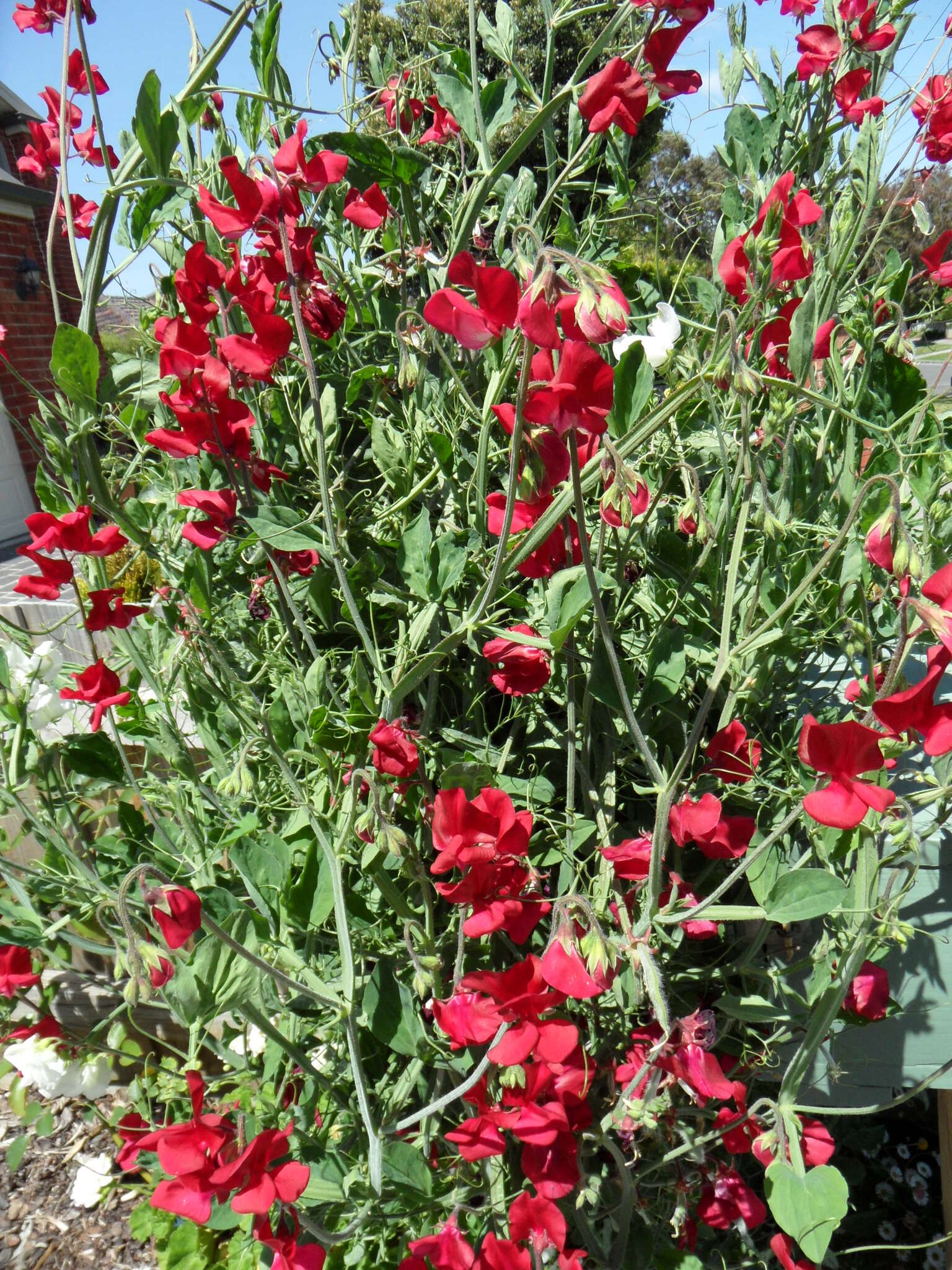
Ancient Greek name for the pea or pulse from la — very, thoures — stimulant, referring to the alleged properties of the seeds.
Annual or perennial herbs with winged stems, generally climbing by leaf tendrils. Leaves mostly pinnate with a terminal tendril; stipules often leafy. Leaflets with parallel veins. Flowers axillary or flowers occasionally solitary. Sepals 2-lipped. Stamens 10, 1 free. Fruit pod flat, splitting at maturity. Mostly grown for the decorative and highly scented flowers.
L. niger Bernh., Black Pea, from Europe, Caucasus and Syria is occasionally grown; it does not have tendrils.
About 150 species from S America, montane E Africa and Europe.
Seed or division.
L. odoratus, Sweet Pea, is used in floristry, for cutting and for its exquisite scent, which is used in cosmetics and perfumery; some species are used for fodder and green manure and occasionally in erosion control; L. macrorrhizus and L. tuberosus have edible potato-like tubers.
Herb with winged stems; leaves pinnate with a terminal tendril (usually branched); leaflets mostly with parallel veins; stamens 10, 1 free; flower wings essentially free from the keel (this latter character distinguishing the Sweet Pea from peas and beans).
Bassler (1966, 1973, 1982), Kupicha (1983).
Source: (2002). Fabaceae. In: . Horticultural Flora of South-eastern Australia. Volume 3. Flowering plants. Dicotyledons. Part 2. The identification of garden and cultivated plants. University of New South Wales Press.
